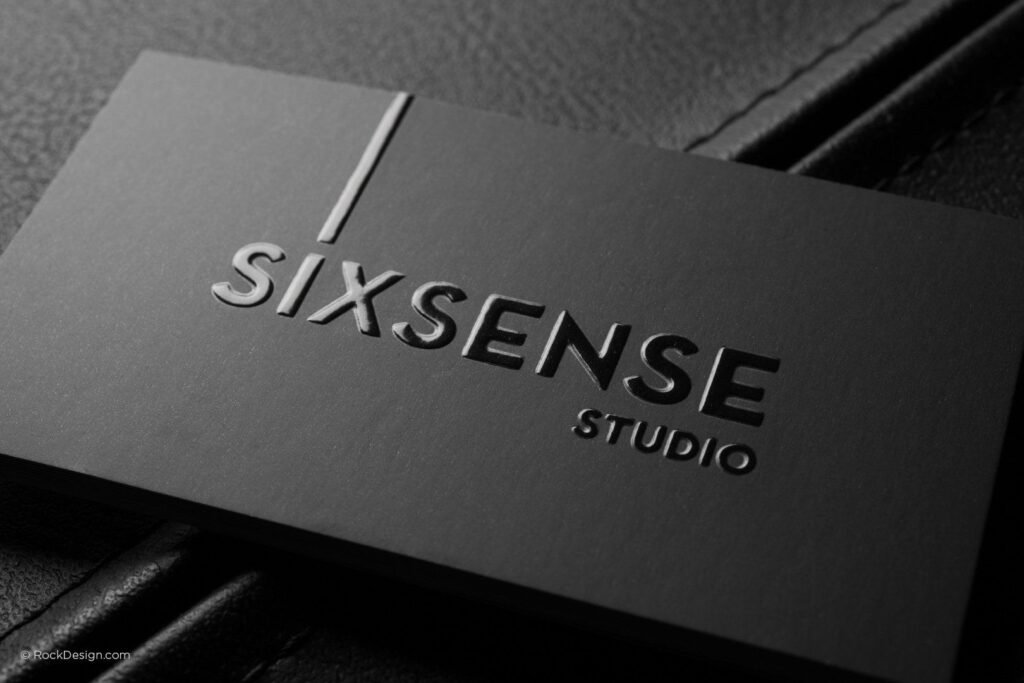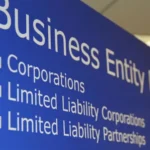In today’s digital world, business cards remain a powerful tool for networking and building connections. Despite the rise of social media and digital contacts, a well-crafted business card can make a lasting impression and open doors to new opportunities. In this comprehensive guide, we’ll explore everything you need to know about business cards—from their importance to design tips, printing options, and etiquette.
Why Business Cards Are Still Relevant?
Business cards may seem old-fashioned in an era dominated by smartphones and online profiles, but they continue to be essential in many professional settings. Here’s why:
- First Impressions Matter: A business card is often the first piece of branding a potential client or partner will see. It represents your brand, your style, and your professionalism in a small, tangible form.
- Convenience: Not everyone has immediate access to digital devices, especially in settings like conferences or networking events. A business card is a quick and easy way to share contact details without fumbling with phones or searching for profiles online.
- Memorability: A well-designed business card can stand out in someone’s wallet or desk, serving as a physical reminder of your interaction long after the initial meeting.
- Professionalism: Handing over a business card shows that you are serious about your business and the relationship you are building.
Key Elements of a Business Card
Creating an effective business card requires careful consideration of several key elements:
1. Logo and Branding
Your logo is the centerpiece of your business card. It should be prominently displayed and aligned with your brand’s colors and fonts. Your branding on the card must be consistent with your website, brochures, and other marketing materials.
2. Contact Information
Ensure that your contact information is up-to-date and includes essential details such as:
- Name: Your full name or the name you go by professionally.
- Job Title: Clearly state your position within the company.
- Phone Number: Include a direct line where you can be easily reached.
- Email Address: Use a professional email address, preferably one that matches your domain.
- Website: Add your company’s website to drive traffic and encourage further engagement.
- Social Media Handles: If relevant, include your LinkedIn profile or other professional social media.
3. Design and Layout
A well-designed business card is visually appealing and easy to read. Consider the following design elements:
- Simplicity: Avoid clutter. A clean design with ample white space makes your card look professional and easy to digest.
- Font Choice: Use fonts that are clear and readable. Avoid overly decorative fonts that may be hard to read at small sizes.
- Colors: Stick to your brand’s color scheme. The colors should be eye-catching but not overwhelming.
- Double-Sided Cards: Consider using both sides of the card. One side could feature your logo and contact information, while the other could include a tagline, QR code, or additional details.
4. Paper Quality
The feel of your business card can say a lot about your brand. High-quality paper gives a sense of professionalism and durability. Common paper choices include:
- Matte: A non-glossy finish that gives a smooth and elegant feel.
- Glossy: A shiny finish that makes colors pop but may be prone to fingerprints.
- Textured: Adds a unique feel to the card, making it more memorable.
5. Special Finishes
To make your business card stand out, consider adding special finishes such as:
- Embossing: Creates a raised effect, making your logo or name stand out.
- Foil Stamping: Adds a metallic finish to specific parts of your card, giving it a luxurious look.
- Spot UV Coating: Highlights certain areas with a glossy finish, creating contrast with the rest of the card.
Business Card Etiquette
Handing out your business card is an art in itself. Here are some tips to ensure you do it right:
1. When to Offer Your Card
Only offer your business card when it is relevant to the conversation. For example, after a meaningful discussion about potential collaboration or during the closing moments of a meeting.
2. How to Present Your Card
When presenting your business card, hold it with both hands and face the recipient. This shows respect and attentiveness. Ensure the card is clean and undamaged.
3. Receiving a Business Card
When receiving a business card, take a moment to look at it before putting it away. This shows that you value the connection. If possible, make a note on the card after the meeting to help you remember important details.
4. Storing Your Cards
Invest in a professional cardholder to keep your cards organized and in good condition. Avoid handing out cards that are bent or dirty.
Digital Business Cards: The New Frontier
While traditional business cards are here to stay, digital business cards are gaining popularity, especially in tech-savvy industries. Digital cards offer several advantages:
- Convenience: Share your digital card via email, text, or social media with just a few clicks.
- Eco-Friendly: No paper waste, making them a sustainable option.
- Updateable: Easily update your information without the need to print new cards.
- Interactive Features: Digital cards can include links to your portfolio, videos, or interactive content.
How to Design a Digital Business Card?
Designing a digital business card follows many of the same principles as a physical card, but with some added considerations:
1. Choose the Right Platform
There are several platforms available for creating digital business cards, such as:
- LinkedIn: Offers a built-in option for sharing contact details.
- HiHello: Allows you to create a customizable digital card with interactive features.
- About. me: Provides a digital profile that acts as an extended business card.
2. Optimize for Mobile
Since digital cards are often shared via smartphones, ensure that your design is mobile-friendly. Test the card on various devices to ensure it looks good on all screen sizes.
3. Include Interactive Elements
Add links to your social media profiles, portfolio, or a personal video introduction. These interactive elements can make your digital card more engaging and informative.
4. Secure Your Information
Be mindful of privacy when sharing digital business cards. Ensure that the platform you use is secure and that you are comfortable sharing the information publicly.
Conclusion
Business cards, whether traditional or digital, are a crucial tool for networking and establishing professional connections. By investing in a well-designed card, you can leave a lasting impression that helps you stand out in a crowded marketplace. Remember, your business card is often the first representation of your brand that others will see, so make it count.
Frequently Asked Questions (FAQs) About Business Cards
1. What information should be included on a business card?
Your business card should include essential details such as your name, job title, company name, phone number, email address, and website. You may also include social media handles, your company’s logo, and a tagline if applicable.
2. What is the standard size for a business card?
The standard size for a business card is 3.5 x 2 inches (88.9 x 50.8 mm). This size fits comfortably into most wallets and cardholders.
3. Should I use a double-sided business card?
Using a double-sided business card can be beneficial, especially if you have additional information to share, such as a QR code, a map, or a tagline. However, make sure not to overload the card with too much information.
4. What type of paper is best for business cards?
The best paper type depends on the impression you want to create. Common choices include:
- Matte: A smooth, non-glossy finish for a sophisticated look.
- Glossy: A shiny finish that makes colors stand out but can be prone to fingerprints.
- Textured: Adds a unique feel, making the card more memorable.
5. How can I make my business card stand out?
To make your business card stand out, consider using high-quality materials, a unique design, special finishes like embossing or foil stamping, and incorporating a strong brand identity.
6. Are digital business cards a good alternative to traditional cards?
Yes, digital business cards are a great alternative, especially for those who prefer eco-friendly options or want to share interactive content. They can be easily shared via smartphones and updated without the need to print new cards.
7. Can I include a QR code on my business card?
Yes, including a QR code on your business card is a modern way to link directly to your website, portfolio, or LinkedIn profile. It’s a convenient feature that allows recipients to access more information quickly.
8. What should I avoid putting on a business card?
Avoid cluttering your business card with too much information. Stick to the essentials and ensure that the text is readable. Also, avoid using too many fonts or colors, as this can make the card look unprofessional.
9. How should I present my business card in a meeting?
Present your business card with both hands, facing the recipient, as a sign of respect. Make sure the card is clean and in good condition. When receiving a business card, take a moment to look at it before putting it away to show that you value the connection.
10. How many business cards should I carry with me?
It’s a good idea to carry 20-30 business cards with you at all times, especially when attending networking events or conferences. You never know when you’ll meet a potential client or business partner.
11. Is it necessary to include a job title on my business card?
Including a job title on your business card is generally recommended, as it gives context to your role within the company. However, if your role is broad or if you prefer a minimalist design, you can opt to leave it out.
12. How often should I update my business card?
Update your business card whenever your contact information, job title, or branding changes. Keeping your card up-to-date ensures that it accurately represents your current professional status.
13. Can I use both physical and digital business cards?
Absolutely! Using both physical and digital business cards allows you to cater to different preferences and situations. Physical cards are great for in-person meetings, while digital cards are convenient for online networking.
14. What are some common mistakes to avoid when designing a business card?
Common mistakes include using too many colors or fonts, overcrowding the card with information, choosing a font size that’s too small, and using low-quality images or logos. Always aim for simplicity, clarity, and consistency with your brand.
15. Is it appropriate to hand out business cards in casual settings?
While business cards are typically exchanged in professional settings, it can be appropriate to hand them out in casual settings if the context is right. For example, if you’re discussing business opportunities or meeting someone who could be a valuable connection, it’s perfectly fine to offer your card.






